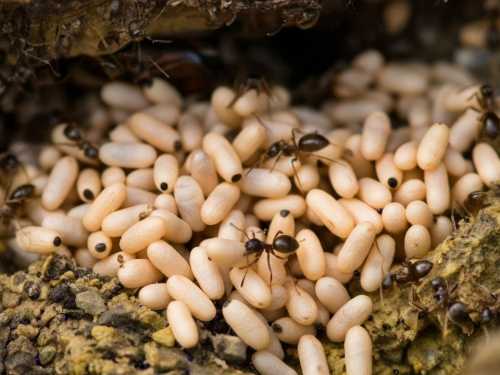
No, have you seen them? They're just gigantic! Those “eggs” you saw may be as long as a worker ant, but thicker than it!
A queen ant lays up to a hundred, and some even a thousand, eggs a day. How does she even fit so many in her nest?
In short, no way. It is physically impossible. The brown “eggs” that the workers carry are actually pupae. Before pupating, ant larvae weave a cocoon of dense and strong brown silk. This creates the appearance of a shell. But there are species that do not wrap themselves in silk, but are reborn openly. You cannot confuse such insects with eggs – they look like whitish ants curled up in an embryonic position.
Ant larvae are often mistaken for eggs. They are plump, white, and their legs and jaws are so small that they can only be detected if you know where to look. Even compared to clumsy caterpillars, ant larvae are lazy and defenseless. They cannot independently search for food, move around, or even take care of their own hygiene.
The reason for the transformation of larvae into amorphous balls is simple: the jaws and legs have degraded due to their uselessness. For tens of millions of generations, ant larvae have been born in the dark and safe, under the reliable protection of adults.
Real ant eggs are difficult to detect. They are very small, only 0.5-1 millimeter long. In the pursuit of rapid reproduction, the queen had to shift some of the worries to the workers. The food supply inside the eggs is sufficient for the formation of the embryo, but the further development of the larva requires external nutrition.
The solution to this problem was taken by the workers: they regularly lick the eggs. The thin wall of the egg absorbs the moisture contained in the saliva, which supports the development of the embryo. In addition, the saliva has antibacterial and antifungal effects. It provides subsequent generations of insects with protection from pathogenic filth.





